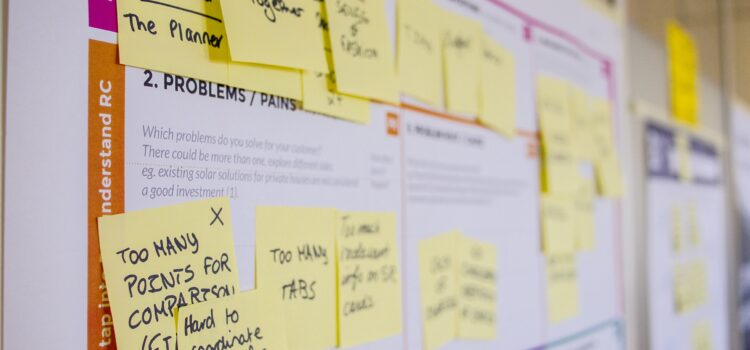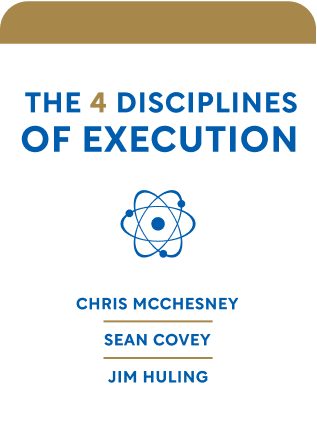

This article is an excerpt from the Shortform book guide to "The 4 Disciplines of Execution" by Chris McChesney, Sean Covey, and Jim Huling. Shortform has the world's best summaries and analyses of books you should be reading.
Like this article? Sign up for a free trial here .
Are you working through the 4DX process? How do you create a cadence of accountability and what does that do for your goals?
In 4DX Discipline 4, you have to create a cadence of accountability because this where the execution actually happens. Disciplines 1-3 set you up for success, but you have to follow through at this point.
Read on to learn how to create a cadence of accountability to accomplish your wildly important goals in 4DX.
Discipline 4: Create a Cadence of Accountability
Disciplines 1-3 set up execution, but Discipline 4 is where it actually happens. If you were to stop 4DX after Discipline 3, scoring would happen, but only for a short while. In time, the scoreboard would become a to-do list that no one’s doing. Or, everyone would come up with their own ideas about how to do things, scattering effort in all directions. Without accountability, the game/goal will be overtaken by the whirlwind of day-to-day operations.
In 4DX, “accountability” doesn’t mean an annual performance review or getting called out for failing—there’s no negative connotation. Here, accountability isn’t top-down or organizational; it’s personal. You’re accountable to your team members (not just your boss), but most importantly, accountability becomes a matter of personal pride. Since you helped choose the WIG and lead measures, you can make commitments you have the power to carry out. Discipline 4 reconnects everyone, in a personal way, to the WIG, in spite of the distractions of the whirlwind.
The key to Discipline 4 is that the accountability is precise and regularly scheduled—a cadence. That’s why you have to create a cadence of accountability.
Meetings to Discuss Progress
You create a cadence of accountability and maintain it with a dedicated meeting. This session takes place at least once a week and lasts less than 30 minutes. In it, the leader holds people to commitments they make that will increase the lead measures.
(Initially, the meetings may take longer than half an hour, but they’ll go faster as you get used to the agenda. If non-WIG-related things come in the meeting, schedule a different meeting to sort them out.)
There are several benefits to working to create a cadence of accountability:
- Refocus the team on the WIG in spite of the whirlwind.
- Give team members a chance to learn from each other. When one team member comes up with something that works, the others can copy. Team members also learn what isn’t working, and know to avoid it.
- Help team members. If someone hits a snag, the team helps clear it.
- Adapt to things that were impossible to see back in annual planning.
- Celebrate successes and maintain engagement.
Session Requirements
There are two requirements for the meetings that create a cadence of accountability:
Requirement #1: They must be consistently scheduled.
The session must be at the same day and same time every week. Never miss it—your team will follow your example and treat it with as much importance as you do. If you can’t personally attend (for example, you’re on vacation), you should:
- Choose someone else to lead the meeting, such as a supervisor or an experienced member of the team. It’s also fine to rotate the meeting leader weekly.
- Train the substitute. Make sure they know that the WIG session is very important, and that they know the agenda.
- Debrief. When you return, meet with the substitute leader and recap the meeting. It’s also important to thank the substitute for taking on such an important responsibility.
Demand attendance. Even if the people in your organization work shifts, are geographically distributed, or have massive whirlwinds, everyone must attend a weekly WIG session to maintain accountability. To encourage attendance:
- Remind people that a session isn’t a large time commitment (20-30 min for a session), or do a shorter 5-7 min version called a huddle. Huddles still take place weekly and cover the same things as the full meeting, but the team as whole makes one commitment for the next week, instead of everyone making their own.
- Hold the WIG session right before or after an existing meeting so most people are already assembled.
- If there’s no time when everyone can attend a WIG session or huddle, leaders can hold more than one, or meet with people individually, in person or by phone.
Requirement #2: They must be whirlwind-free.
It doesn’t matter how important a whirlwind issue might be, never discuss whirlwind problems in a WIG meeting. Have a separate meeting later. Maintaining the whirlwind is never a good enough consolation prize for failing to meet a WIG’s weekly commitments.

———End of Preview———
Like what you just read? Read the rest of the world's best book summary and analysis of Chris McChesney, Sean Covey, and Jim Huling's "The 4 Disciplines of Execution" at Shortform .
Here's what you'll find in our full The 4 Disciplines of Execution summary :
- The 4 disciplines that can make any strategy a successful reality
- Why a great plan falls apart when you don't think adequately about execution
- The 6 steps you need to scale the 4DX model across an entire organization






